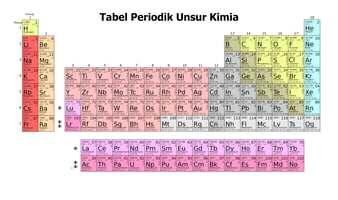Phosphorus (P) 1. Basic Information Atomic number 15 Symbol P Atomic mass 30.97 g/mol Electron...
Serium
Serium
1. Basic Information
| Atomic Number | 58 |
| Symbol | Ce |
| Atomic Weight | 140.12 g/mol |
| Electron Configuration | [Xe] 4f1 5d1 6s2 |
2. Physical and Chemical Properties
Cerium is a silvery gray soft metal belonging to the lanthanide group. It has a melting point of 799°C and a boiling point of 3426°C. Cerium is highly reactive and oxidizes quickly in air, forming an oxide layer on its surface. In water, cerium reacts slowly at room temperature and faster in hot water, releasing hydrogen gas. Cerium is soluble in mineral acids and forms Ce3+ and Ce4+ salts.3. Presence in Water and Health Effects
Cerium can be found in natural water in low concentrations, usually less than 1 μg/L. The main source is weathering of cerium-containing rocks and minerals. Exposure to small amounts of cerium is generally not harmful to humans. However, in high concentrations, cerium can accumulate in the body and potentially cause toxic effects on the liver and lungs. Long-term inhalation of cerium dust can cause pneumoconiosis.4. Water Treatment Applications and Removal Methods
Although cerium is rarely the primary target in water treatment, several methods can be used to remove it: 1. Ion exchange: Specialized cation exchange resins can be used to remove Ce3+ ions from water. 2. Chemical precipitation: The addition of a base such as sodium hydroxide can precipitate cerium as hydroxide. 3. Adsorption: Activated carbon or special adsorbents can bind cerium from solution. 4. Membrane filtration: Technologies such as nanofiltration or reverse osmosis can remove cerium and other contaminants. 5. Coagulation-flocculation: This process can precipitate cerium along with other suspended particles.5. Industrial Uses in Water Treatment
Although not common, cerium has some potential applications in water treatment: 1. Catalysts: Cerium oxide is used as a catalyst in advanced oxidation processes to remove organic contaminants from water. 2. Adsorbent: Cerium oxide nanoparticles have been investigated as adsorbents to remove arsenic and fluoride from water. 3. Antimicrobial: Several studies show the potential of cerium nanoparticles as antimicrobial agents in water treatment systems.6. Case Studies and Real-World Applications
A study in India used cerium oxide nanoparticles to remove arsenic from groundwater. Results showed removal efficiencies of up to 98% for As(III) and As(V). This research opens up opportunities for the development of cerium-based water treatment technologies in arsenic-contaminated areas. In China, a pilot project used nanocomposite membranes containing cerium oxide for industrial wastewater treatment. These membranes showed improved performance in removing heavy metals and organic compounds over conventional membranes.7. Regulatory Guidelines and Standards
Currently, there are no specific standards for cerium in drinking water set by WHO or major regulatory agencies. However, some countries are considering setting maximum limits for total rare earth elements, including cerium, in drinking water. In the European Union, there are discussions to set a limit of 100 μg/L for total rare earth elements in drinking water.8. Environmental Impact and Sustainability Considerations
The increasing use of cerium in various technological applications has raised concerns about its accumulation in the environment. Cerium oxide nanoparticles used in water treatment have the potential to accumulate in sediments and aquatic organisms. Further research is needed to understand the long-term impacts of cerium release to the aquatic environment. From a sustainability perspective, the use of cerium in water treatment should consider the full life cycle, including extraction, processing and disposal. Efforts to recycle and recover cerium from e-waste and spent catalysts can help reduce the environmental impact of new cerium production.9. Future Trends and Research in Water Treatment
Some promising areas of research involve cerium in water treatment: 1. Development of cerium-based nanostructured adsorbents for the removal of specific contaminants such as phosphates and nitrates. 2. Integration of cerium nanoparticles in filtration membranes for enhanced antifouling and antimicrobial performance. 3. Application of cerium in photocatalytic technology for degradation of persistent organic pollutants in water. 4. Use of cerium in real-time water quality monitoring sensors and devices. 5. Research on cerium recovery from industrial wastewater as a secondary source.10. Interesting Facts Related to Water Treatment
- Cerium is the most abundant rare earth element in the earth's crust, even more common than copper or lead.
- Cerium oxide nanoparticles have the unique ability to switch between Ce3+ and Ce4+ oxidation states, making them highly effective as catalysts in water treatment.
- Some studies have shown that cerium can enhance plant growth when added in small amounts to irrigation water, opening up possible applications in precision agriculture.
- Despite belonging to the "rare earth element" group, cerium is actually quite abundant and has great potential for green technology applications, including water treatment.
.png)
.png?width=50&name=Logo_Watermart_Perkasa-removebg-preview%20(1).png)
